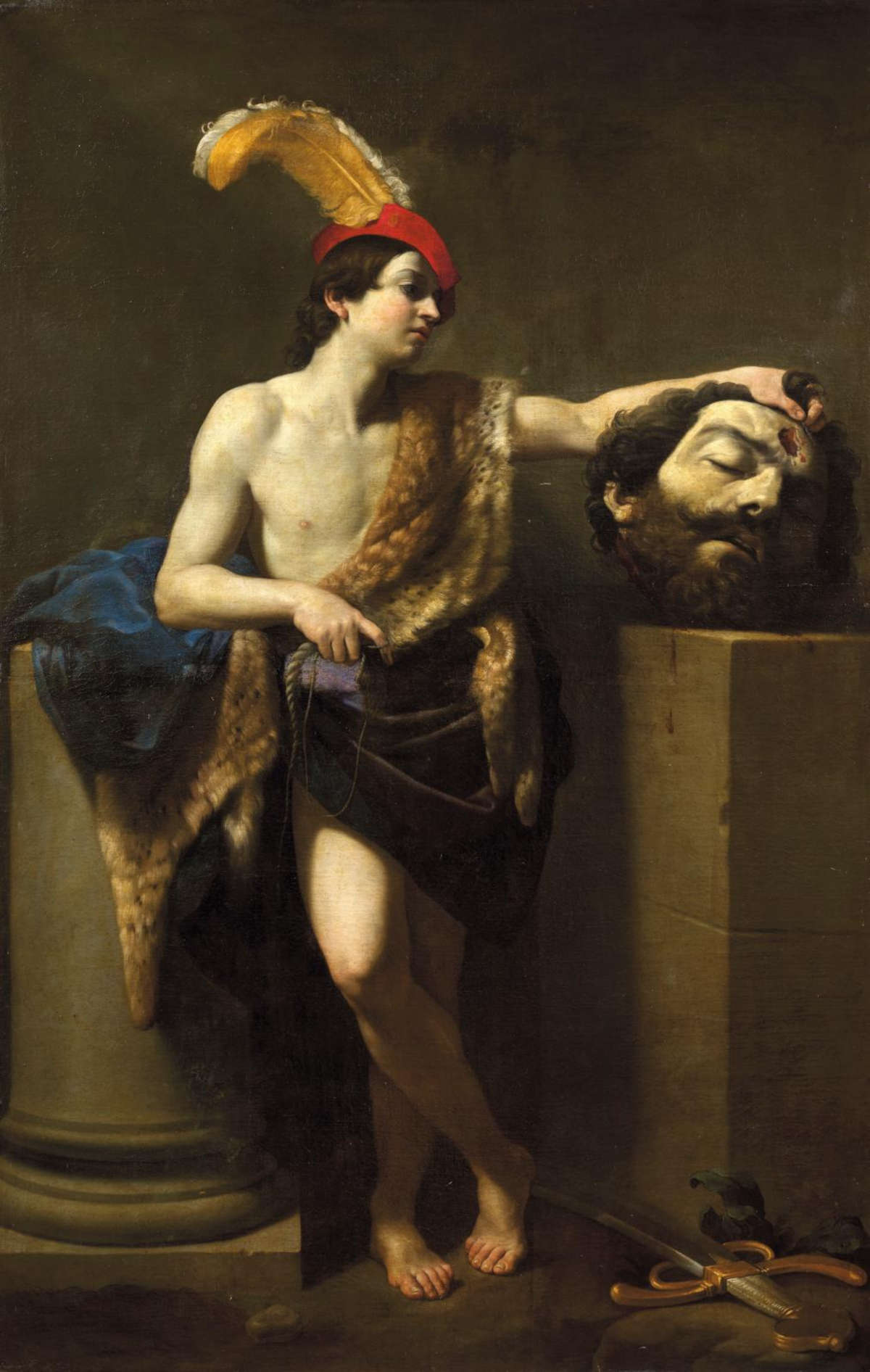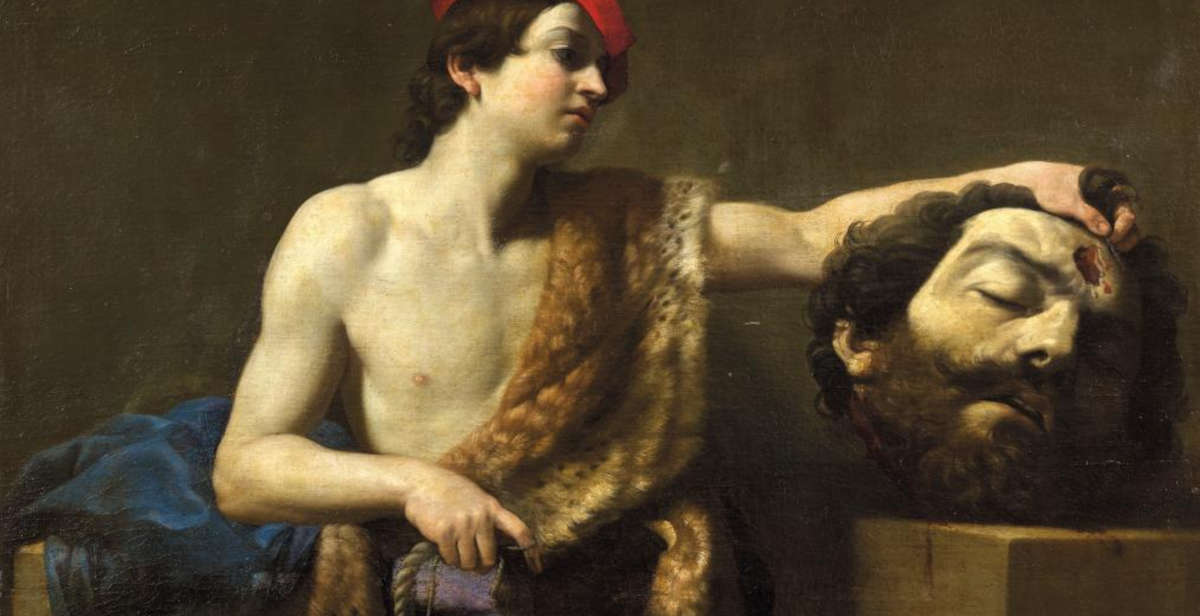Record highs at auction for a Guido Reni painting with adjudication at 10,100,000 euros, rising to 12.4 million with royalties, for the David with the Head of Goliath thatresurfaced last June and went to auction yesterday at Artcurial in Paris, starting with an estimate of between 2 and 4 million euros. The auction house saw in the painting (and the same can be said at this point for the buyers who battled to grab it) an important work dating from 1605-1606, the one purchased by the Duke of Modena and Reggio, Francesco I d’Este, directly from the artist in Bologna for 275 ducats, through the intermediary of Cornelio Malvasia, in January 1633. From Francesco I d’Este the work later passed into the famous collection of Prince Eugene of Savoy at the Upper Belvedere residence in Vienna, where it was recorded in the 1736 inventory. When Charles Emmanuel III of Savoy purchased the prince’s entire collection en bloc in 1741, the painting was transferred to Turin, entering the collections of the Royal Palace. It is then thought that in the early 19th century, during the French occupation of Piedmont, the painting was taken to France by General Pierre-Antoine Dupont de l’Etang, who kept it in his Hôtel de Beauvau in Paris. Since then, the work remained in the same family until its Parisian sale, a rare case of protracted continuity of ownership for more than two centuries.
The painting, which is known in multiple examples, preserved in the Louvre, the Uffizi, Dresden, Florence, Munich, Orleans and other places, classified by “types” (e.g. “Créquy,” “La Vrillière,” “Volponi”), represents a crucial turning point in Guido Reni’s artistic evolution, at a time when the artist profoundly reworked the innovations of Caravaggio’s naturalism, confronting the new languages that emerged between Rome and Bologna in the early seventeenth century. The canvas beaten by Artcurial belongs to the “Créquy” type, the same as the Louvre. The work does not appear in the catalog of the eighteen paintings by Guido Reni that were officially transferred from Piedmont to France in 1799, nonetheless we wanted to identify the Artcurial painting as one of the works that moved across the Alps. Indeed, it is not the only David that is a candidate to be recognized as the one commissioned by Francesco I d’Este: an attempt was made in 2012 with another similar David , which went to auction at Sotheby’s with an estimate of £3-5 million (today it is instead attributed to Simone Cantarini).

Between 1605 and 1606, while the Carraccis redefined classicism with the decoration of the Galleria Farnese and Caravaggio scandalized and fascinated with the drama of the works for the Cerasi Chapel, Reni found his own personal way, capable of combining the force of reality and the harmony of the ideal. His David is a youthful figure, elegant and almost androgynous, portrayed in the calm aftermath of the action. There is no triumph, no exhibited violence: the young hero contemplates the giant’s severed head with absorbed gaze, in a balance of ambiguity and emotional suspension that represents a major iconographic novelty.
The artist draws on ancient models to define the young man’s posture, amid sculptural citations and Renaissance references, while for Goliath’s physiognomy he resorts-according to Malvasia’s accounts-to the face of a Bolognese shopkeeper, Righettone Speziale. It is a distinctly Caravaggesque solution, as is the stark rendering of details, the severe essentiality of the background, and the search for real faces. The dramatic chiaroscuro, the blade of light sculpting the figure, and the presence of details such as the red cap with feather fully belong to the new naturalist sensibility. But at the same time Reni breaks away from it, pursuing a harmonious beauty, diffuse light, and compositional order that declare his adherence to the classical canon, rooted in his assiduous study of ancient statues.
The painting was celebrated from the start. Giambattista Marino mentioned it in his Gallery of 1619, contributing to the spread of its prestige. Its iconographic fortune was wide: among the many artists who reworked it were Artemisia Gentileschi, Valentin de Boulogne, Spadarino, Elisabetta Sirani, Giovanni Battista Caracciolo, and Niccolò Tornioli. The strength of Reno’s invention, which combined introspection, ideal beauty, and emotional tension, made this image one of the most influential of the entire seventeenth-century Italian art. The 18th century continued to appreciate it as well, as Jean-Jacques Lagrenée’s 1780 interpretation shows.
The version that has re-emerged now shows close affinities with the Louvre version, although it differs in significant details: the position of the sling, the shape of the V, which in this canvas becomes a U, the different pattern of the blood under Goliath’s head, the physiognomy of the giant, the arrangement of the locks of David’s hair, the rendering of the fur, and various details of the minimal landscape. Technical analysis suggests that the two canvases, both on media with the same herringbone texture, may have been made in parallel or in close succession. Restoration of the yellowed paint will restore the loincloth to its original hue, a deep purple obtained with lapis lazuli, distinct from the azurite blue of the drape on the pillar.
The rediscovery of the work is part of a rapidly renewing critical context. Recent exhibitions in Frankfurt, Madrid, and Orléans have redefined the status of autograph replicas in Reni’s oeuvre, leading scholars such as Corentin Dury to systematically classify the various types of the David. The version already in the Liechtenstein collection in Vienna turns out to be a direct copy of the canvas now in France and not the Parisian exemplar. The “La Vrillière” types found in Orléans, Florence, Dresden, and Osnabrück show further variations, as do the works of the “Volponi” type preserved in Urbino and Sarasota.
The subject has deep symbolic value in the three monotheistic religions. David is the young shepherd who becomes king, an exemplary figure in faith, courage and intelligence. In Christian art he is often associated with Christ, and in the seventeenth century he became an emblem of the triumphant Church, especially in a Counter-Reformation key. In Republican Florence it is a symbol of civic freedom, as Michelangelo’s work in front of the Palazzo Vecchio demonstrates. Reni’s interpretation, sober and meditative, dialogues with this tradition, offering a figure of a hero who wins not through the display of force but through reflection.
 |
| France, record at auction for Guido Reni: the David sold for 12.4 million euros |
Warning: the translation into English of the original Italian article was created using automatic tools. We undertake to review all articles, but we do not guarantee the total absence of inaccuracies in the translation due to the program. You can find the original by clicking on the ITA button. If you find any mistake,please contact us.